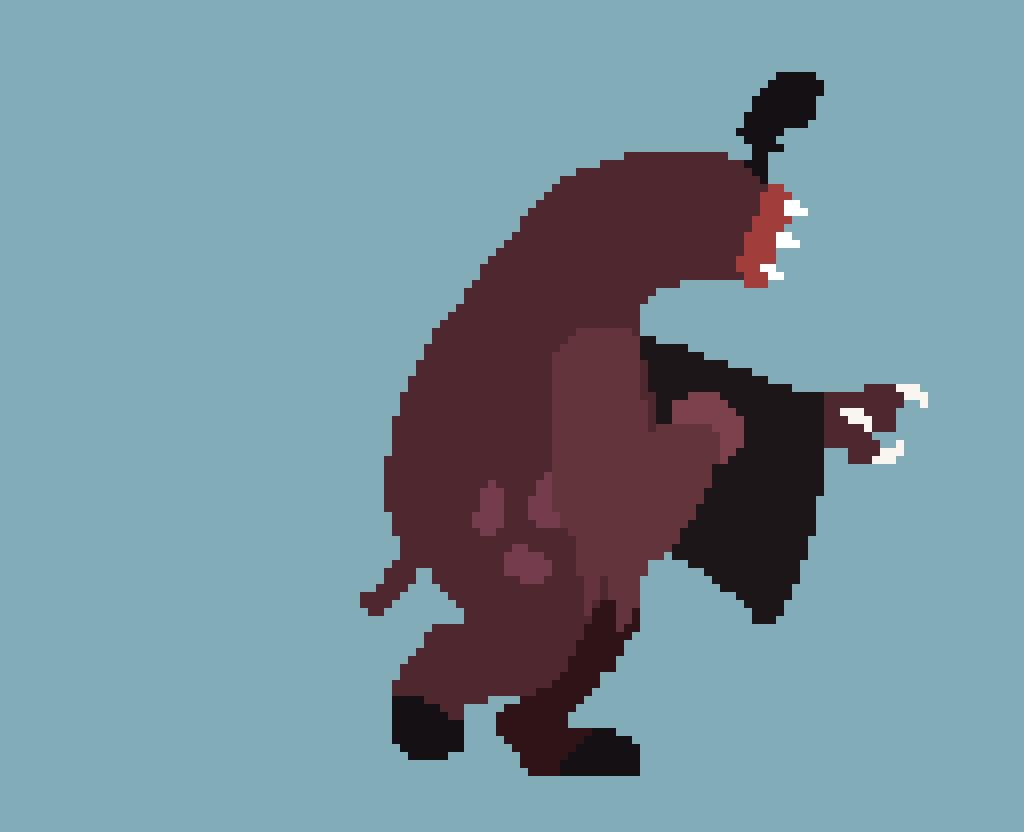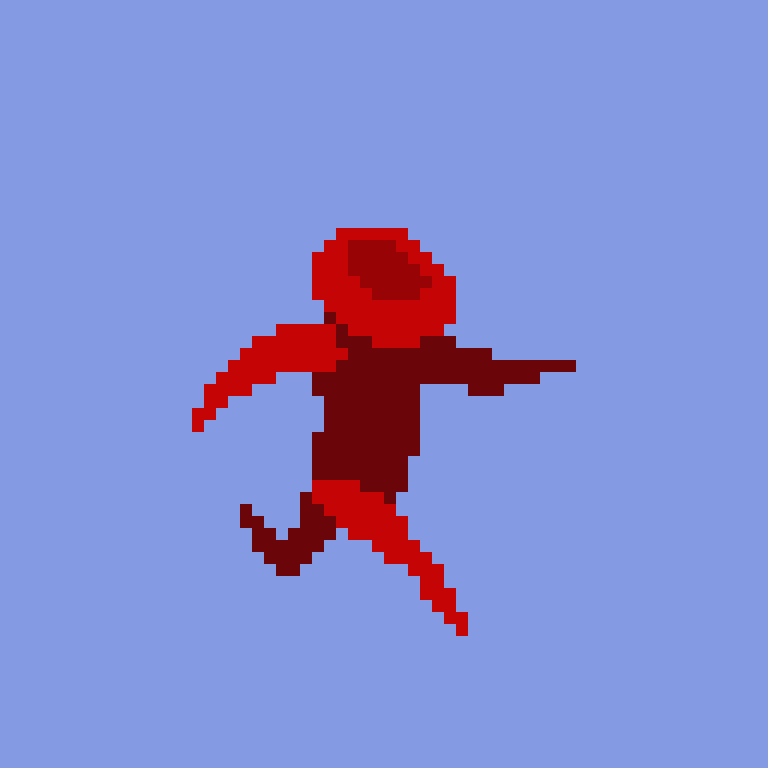top of page


(Cancelled)
Genre
Action Adventure
Team
Me and 3 core members, 3 smaller contributors, 3 floaters (see postmortem)
Core Development Timeframe
Jun 2020 - Sep 2020
Design Goals
-
Feature engaging enemies
-
Encourage player choice and counterplay
-
Evoke a hi-bit dark fantasy atmosphere


Character Design

REVEAL
REVEAL

.jpg)
.jpg)
Visual Designs
With different silhouettes and colours, each character is meant to stick out.
These disgusting monsters use size, shape, and colour to show their thematic meanings and combat strengths.



GIF

Animation
Enemy movement shows their physical and mental traits.
The Blood Imp wobbles and jerks it's limbs, portraying how it is mindlessly reanimated.
The Leech Daddy recklessly tears it's stomach open, showing its desperation, pain, and hunger.
.jpg)
GIF

Behaviours
AI Behaviors showed a deeper inner life of enemies.
The bully hurls poop, points, and laughs, showing it's cruelty. Yet, running away in fear when alone shows it's insecurity.
The Leech Daddy shows its possessive love by forming a parasitic bond with the player: protecting the player, yet draining the player's life.

GIF




Production Pipeline
This production pipeline prioritizes the most necessary work first and reduces waste.
View Production Pipeline

Visual Documentation
In order to communicate technical aspects of the character designs effectively without needing to be contacted each time there was a question, I made documentation which was easy to read by anyone on the team. Documents were made in google slides because of its surprisingly easy and collaborative visual tools.


Project Management
Postmortem
As two co-managers, Gavin and I started this project to keep members in touch during 2020 and to create a strong portfolio piece for everyone. We also worked to support fair treatment between us.
I did feel in touch with my team. Meetings helped the team stay connected and motivate each other. We documented our hours so our contributions were seen, and to track when commitments weren't being followed.
However, keeping our team in touch didn't solve all of our problems. Floating members showed up but couldn't contribute for numerous reasons - including the mental health crisis of the early pandemic. Ideally, we should have kindly dismissed these members more quickly. Not doing so inflated our scope and misprioritized tasks based on empty commitments. Special thanks to our smaller contributors, Hannah, Anthony, and Jeremy, who communicated well about their time and didn't cause overscoping. They are my role models when considering projects I have little time for.
This project changed how I have game ideas. I keep scope to a minimum, and innovation to a maximum. With bigger ideas, I consider what games a team should make first as stepping stones.
We also didn't prototype enough. Without being skeptical, we wasted our time on failed concepts. My enemy designs each contained at least one ability that wasn't worth the development cost. The slimes in total didn't contribute well to the combat's flow. Our squad AI system was also a heavy investment that contributed little.
As project managers, Gavin and I made some smart moves that gave us intel on our team's productivity, helped our team make great accomplishments, and make use of quarantine. However, some beginner mistakes prevented this project from finding its goals. Since then, I've learned to follow best practices in my process, and my games have noticed.



Easy Navigation
Tidier workspaces helped development be easy, fast, and gratifying.
Keeping an organized and signposted Confluence page was lots of work, but paid off once we incorporated more team members.
I used symbols to improve navigation and efficiency in our Discord server and Unity files. The Unity folder symbols helped to draw distinctions between same-name folders by identifying them as art☀, prefabs⦿, or scripts▤.
Leading Meetings
We wanted to stay connected with frequent meetings, but tangents and repeat topics hurt us. This 4-step guideline helped meetings be their best.

bottom of page